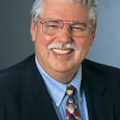MARKET WATCH: Bullish inventory, unchanged Fed policy raise oil prices
Oil prices rebounded Mar. 20 with front-month crude up 1% in the New York futures market as a bullish inventory report and no change in the Federal Reserve’s economic stimulus program apparently overwhelmed concerns of economic woes in Cyprus.
“Markets should be a little sluggish today, to say the least, especially compared [with] the market activity yesterday after [Fed Chairman Ben Bernanke] promised to keep on spending,” said analysts in the Houston office of Raymond James & Associates Inc. The Dow Jones Industrial Average increased 0.4% “on the booster shot [from the Fed] with consumer sectors leading the way,” they said. Energy corporate stocks were up, with the SIG Oil Exploration & Production Index and the Oil Service Index recovering 0.1% and 0.6%, respectively. However, crude and equity stock prices retreated in early trading Mar. 21 as Cyprus appeared to be running of time for a bailout of its economy.
US inventories
The Energy Information Administration reported the withdrawal of 62 bcf of natural gas from US underground storage in the week ended Mar. 15, below the Wall Street consensus for a 71 bcf pull. That left 1.876 tcf of working gas in storage, down 502 bcf from the comparable period a year ago but 162 bcf above the 5-year average.
EIA earlier said commercial US crude inventories dropped 1.3 million bbl to 382.7 million bbl in the same week, opposite of Wall Street’s consensus for a 2 million bbl increase. However, crude stocks remain well above average for this time of year. Gasoline inventories fell 1.5 million bbl to 222.8 million bbl. Analysts expected a 2 million bbl decrease in that category. Finished gasoline stocks declined while blending components increased. Distillate fuel inventories were down 700,000 bbl to 119.8 million bbl last week, short of the expected 1 million bbl draw.
“The overall draw in ‘Big Three’ inventories [of crude, gasoline, and distillate fuels] was more than three times analysts’ estimates,” Raymond James reported. “Large builds in residual fuel and unfinished oil stocks partially offset the Big Three decline, resulting in a smaller drop in total petroleum inventories. Cushing, Okla., inventories edged down for the second consecutive week to 49 million bbl but are still up by 10.5 million bbl year-over-year.” Refinery utilization increased to 83.5% from 81% the previous week.
Energy prices
The April contract for benchmark US sweet, light crudes regained 80¢ to $92.96/bbl Mar. 20 on the New York Mercantile Exchange. The May contract recovered 98¢ to $93.50/bbl. On the US spot market, West Texas Intermediate at Cushing was up 80¢ to $92.96/bbl.
Heating oil for April delivery increased 2.8¢ to $2.89/gal on NYMEX. Reformulated stock for oxygenate blending for the same month bounced back 7.12¢ to $3.12/gal.
The April natural gas contract, however, dipped by 0.9¢ to $3.96/MMbtu on NYMEX. On the US spot market, gas at Henry Hub, La., retook 2.5¢ to $3.98/MMbtu.
In London, the May IPE contract for North Sea Brent rose $1.27 to $108.72/bbl. Gas oil for April continued its decline, down $1.25 to $898.75/tonne.
The average price for the Organization of Petroleum Exporting Countries’ basket of 12 benchmark crudes lost 67¢ to $105.85/bbl.
Contact Sam Fletcher at [email protected].
About the Author

Sam Fletcher
Senior Writer
I'm third-generation blue-collar oil field worker, born in the great East Texas Field and completed high school in the Permian Basin of West Texas where I spent a couple of summers hustling jugs and loading shot holes on seismic crews. My family was oil field trash back when it was an insult instead of a brag on a bumper sticker. I enlisted in the US Army in 1961-1964 looking for a way out of a life of stoop-labor in the oil patch. I didn't succeed then, but a few years later when they passed a new GI Bill for Vietnam veterans, they backdated it to cover my period of enlistment and finally gave me the means to attend college. I'd wanted a career in journalism since my junior year in high school when I was editor of the school newspaper. I financed my college education with the GI bill, parttime work, and a few scholarships and earned a bachelor's degree and later a master's degree in mass communication at Texas Tech University. I worked some years on Texas daily newspapers and even taught journalism a couple of semesters at a junior college in San Antonio before joining the metropolitan Houston Post in 1973. In 1977 I became the energy reporter for the paper, primarily because I was the only writer who'd ever broke a sweat in sight of an oil rig. I covered the oil patch through its biggest boom in the 1970s, its worst depression in the 1980s, and its subsequent rise from the ashes as the industry reinvented itself yet again. When the Post folded in 1995, I made the switch to oil industry publications. At the start of the new century, I joined the Oil & Gas Journal, long the "Bible" of the oil industry. I've been writing about the oil and gas industry's successes and setbacks for a long time, and I've loved every minute of it.